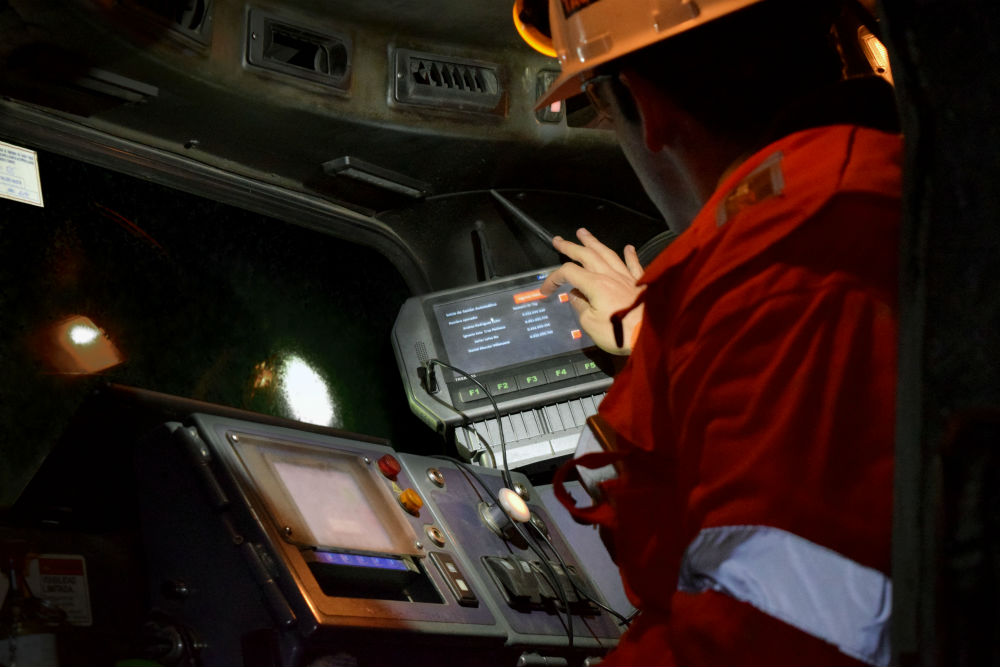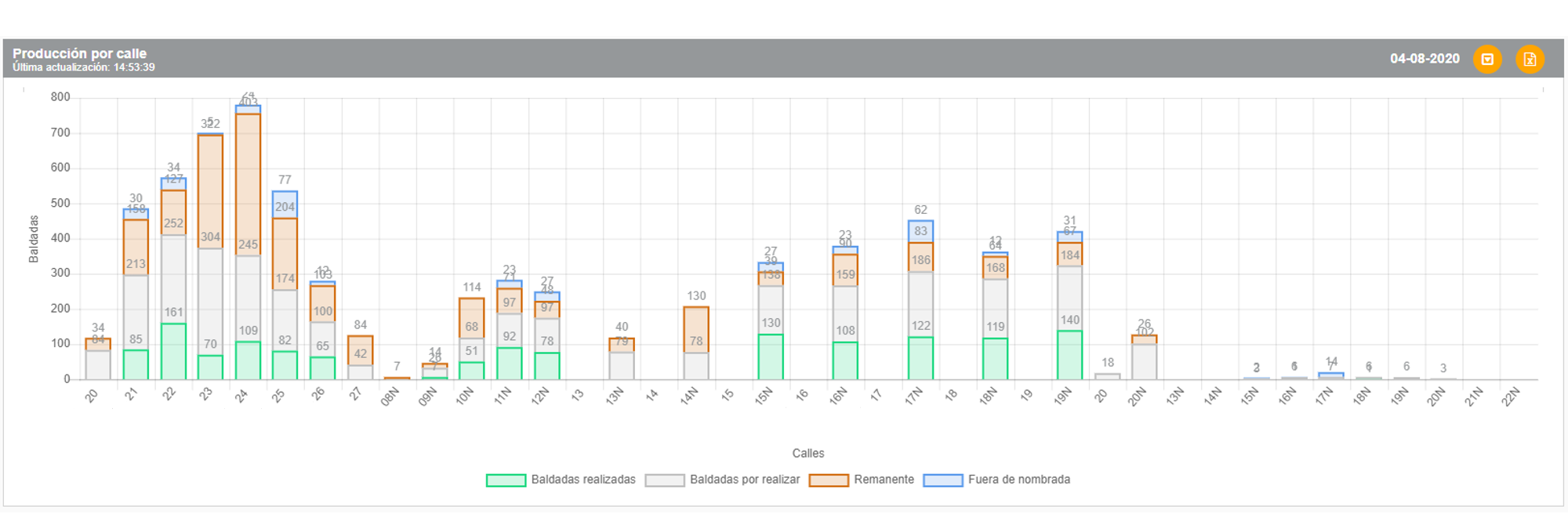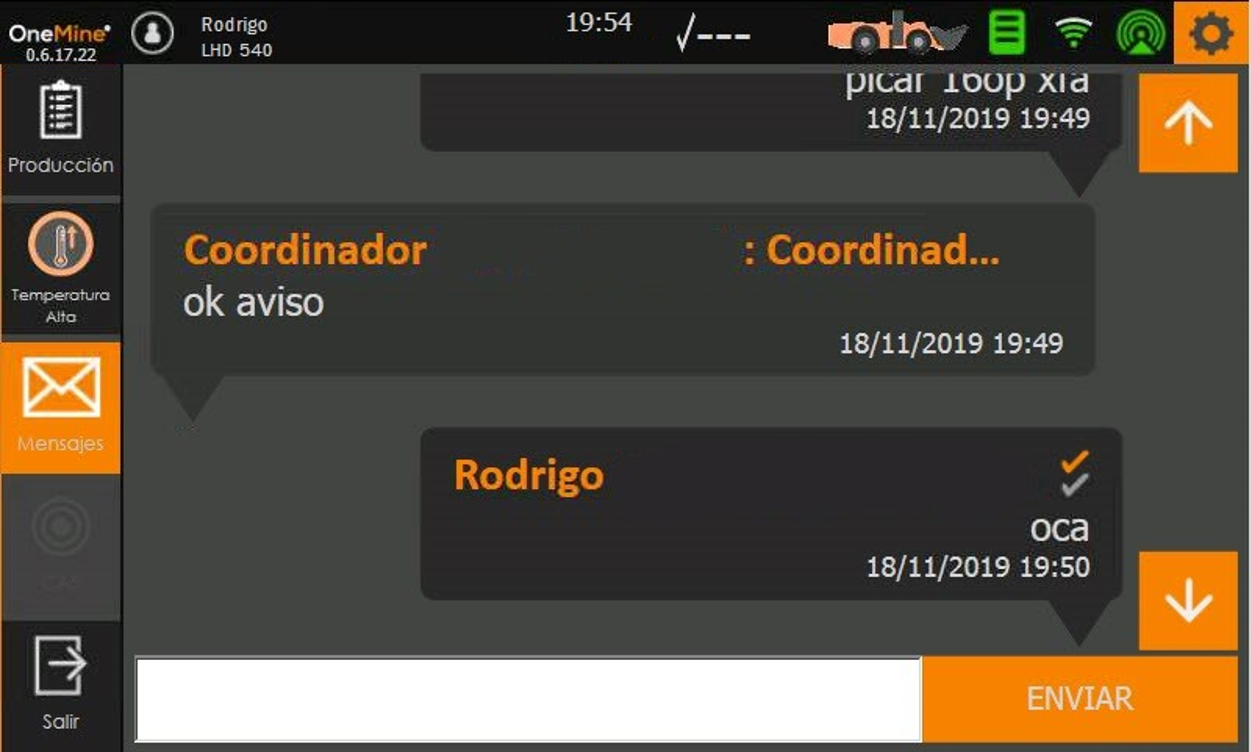Production control system in the underground mine of Chuquicamata
Mining TAG is present in one of the world’s largest mining companies: production management in Chuquicamata
After testing several technologies, Codelco’s Chuquicamata Subterráneo Division has settled on the MT Onemine System. This system will be in charge of managing the LHD fleet in the macroblocks 01, 02 and 03 North and South of the Production Level, operating in the eight drives that will be in service, allowing the monitoring of KPIs, vital signs and movement of equipment in real time.
The world’s largest open-pit transformation project
This copper and gold mine is in the commune of Calama, province of El Loa, II Region of Antofagasta, Chile. The deposit has been operating for more than 100 years and is considered one of the largest in the world according to its characteristics. The mine has its own staff of approximately 4,900 workers and its fine copper production during 2019 was 385,309 t.
In 2019, it began its transformation to become a huge underground operation that will allow the exploitation of the resources under the current open pit. In the next decade, the economic life of the pit will come to an end.

Its extraction process is based on the exploitation of various macroblocks, using the block caving method. It is estimated that this major operation will recover 1.7 billion t in copper and molybdenum ore reserves. Each macroblock will have an area of 35,000 sq.m and in between each macroblock there will be a 30-m pillar in order to prevent any geomechanical problems. In the transition area, the dimensions of each macroblock are 280 m long and 128 m wide, with 144 extraction points (Flores and Catalan, 2019).
The discharge point is located through a system of shafts, which takes the mineral towards the crusher.
“The project of Mining TAG began in December of 2020 with macroblocks 01 North and South,” Andrés Rodríguez, Mining TAG’s CEO, explains. “We started with 13 semi-autonomous units in 2020 and will continue with 24 units in 2021.”
Mining TAG will be present during one of the most important challenges the division has faced: the simultaneous operation of extraction of the underground macroblocks and the extraction of material from the open pit.

Production and progress management
The MT Onemine System, as mentioned, will manage the fleet operating in these macroblocks and oversee the evaluation of KPIs, vital signs and actual movement of the equipment.
How does it work? It uses both hardware and software. The hardware consists of various types of sensors located on-board the equipment, whose signals are processed by an algorithm developed by Mining TAG, which is adjusted for each client, providing up to 99% accuracy.
The MT Onemine System is an intelligent system that leverages off data from sensors placed on the equipment to be controlled. This allows the system to know at all times what is happening in the mine and if the process meets the defined operational standards.
The use of sensor-based technology allows visualisation of the equipment location and automatic calculating of the loading, transport and drilling operation cycles. A tag device is installed at separate extraction, discharge and mining face point. This allows for complete control of the process as the mining operation progresses.
Thanks to the screens installed in the equipment, there is constant communication between the operator and the control room or mine manager, allowing coordination and assignment of tasks. All this is conducted in real time, maximising the effectiveness of production cycles.
The ability to track the location of equipment and record the work carried out in the mine supports the decision-making process, with the system having the capacity to provide relevant information to the right personnel based on the type of equipment.

Why implement a fleet management and control system?
The reason for implementing a fleet management system is the need to positively impact the Overall Equipment Effectiveness (Elevli and Elevli, 2010). This indicator links performance and availability to improve equipment effectiveness.
Mining TAG covers Codelco’s need by reinforcing the data delivery of semi-autonomous equipment. The objective is to provide visibility of data on the semi-autonomous equipment in periods when the equipment is not operating autonomously.
Each team will have a system installed that is capable of recording and storing data, even in the event of network outages, for up to one month. When connected to the communications network, the information collected will be sent through to the MT OneMine platform.
“It is a system that backs up the data when the equipment is not within reach of the Wi-Fi signal and has to be operated manually,” Rodríguez explains. “Our system continues working and the data is not lost; the client receives consistency and the data is retrospectively calculated from the same equipment.”
Through the Short Interval Control process (Global Mining Guidelines Group, 2018), MT Onemine identifies and allows personnel to act in critical situations, with the objective of improving the effectiveness and efficiency of mining processes.
Thanks to the coordination between the operator and the control room, tasks can be adjusted in real time based on current shift conditions in order to achieve short-term planning goals and targets.
The mine manager will have in his/her hands a powerful visualisation tool and view of the movement of the equipment in real time.
“This is a system that, thanks to our development team, is able to interpret the data efficiently,” Andrés clarifies.
We are extremely pleased with this achievement. Mining TAG is present in more than 70% of the fleet of Codelco – El Teniente, the largest underground copper mine in the world, and, today, is present in another giant of the world and Chilean mining at Chuquicamata Underground.
We are grateful to Codelco and Identec Solutions, our strategic partner.









